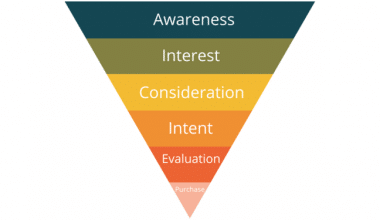However, developing a strong brand image is the most practical step in establishing the desired reputation with your target audience. Brand building is a large task, but it does not have to be difficult.
But the good news is I have got you covered.
In this article, I will guide you through brand development and the strategies you need to know based off of my half a decade’s experience in this field.
Key Takeaways
- Your messaging should be consistent across all touchpoints and reflect the basic values on which you stand
- Your brand story should reflect your brand’s personality and mission statement
- Understanding your target audience is an important part of developing a comprehensive brand strategy because it lays the groundwork for other aspects of brand development
- Establishing a defined target audience is critical for developing a successful brand strategy that yields a higher return on investment (ROI)
- Engage customers with storytelling to build an emotional connection and distinguish your business from the competition
What is Brand Development?
Brand development is the process of ensuring a brand’s quality, distinctive marketing assets, and consumer trust. Brand development is a continuous process of providing for consumers.
Why do You Need a Brand Strategy?
Your business suffers when you don’t know who you are, why you exist, what you believe in, or what you want to accomplish. From consumer communication challenges to employee retention, a lack of brand strategy produces problems at all levels of an organization.
After working with hundreds of clients over the last decade, I’ve learned to recognize the telltale indicators of a brand in crisis, which are frequently triggered by a lack of strategy. Some of these concerns may seem similar to yours. Before I documented my brand strategy, we suffered from them as well.
How to Create a Brand Strategy
Now that I’ve covered the basics of brand strategy, let’s look at the essential components that go into developing one.
#1. Use Technology to Reach Your Intended Audience
Technology can generate leads and sales through a variety of methods. It can be used to manage social media accounts, start marketing campaigns, develop websites, design graphics, improve search engine optimization (SEO) for website visibility, engage clients on mobile apps, send automated emails, and much more.
Over 90% of marketers use social media to raise brand awareness, so using it to reach your intended audience is critical. You may generate content for specific sites such as Instagram or Twitter, use hashtags to boost engagement and visibility, and conduct targeted social media ads, among many other important things.
#2. Create a Convincing Message
77% of customers prefer to buy from brands that share their values, indicating the importance of crafting a message that resonates with your target audience. Your messaging should be consistent across all touchpoints and reflect the basic values on which you stand.
Your brand story should reflect your brand’s personality and mission statement, giving customers an emotional connection to your product or service. It should also focus on how you can solve consumers’ problems and improve their lives, resulting in a genuine connection with your target audience and long-term loyalty.
#3. Identify Your Target Audience
Nearly 60% of customers believe firms should better understand and serve their requirements, which is why it is critical to determine your target market. An effective brand takes the time to go through and prioritize the wants and objectives of its ideal client base; you can’t properly target your ideal consumer unless you understand their demands, long-term ambitions, and pain areas.
Understanding your target audience is an important part of developing a comprehensive brand strategy because it lays the groundwork for other aspects of brand development, such as brand archetype (which helps you create memorable personas), core values (which define how your brand communicates), and even visual design.
You can start by conducting market research to identify user personas, demographics, and insights into what drives your customers. Knowing who you’re targeting will help you customize your brand messaging and tone of voice to better reach new customers and engage existing ones.
Furthermore, establishing a specific target audience is crucial for developing an effective business plan. For example, how do you determine pricing if you don’t know your target customers’ average income or the average price paid for comparable products or services? How can you design an effective digital marketing strategy if you don’t know what platforms or content your target audience prefers? Establishing a defined target audience is critical for developing a successful brand strategy that yields a higher return on investment (ROI).
#4. Create an Engaging Visual Identity
Creating a strong visual identity will increase overall brand recognition. Your visual identity should reflect your positioning statement and feature consistent aspects representing your brand’s themes, such as your logo, typography, and color palettes tailored to your aesthetic.
These aspects should be included in your style guide to be consistent across all touchpoints, including websites, social media profiles, and marketing materials.
Adobe Express is an excellent application for getting started with brand identity building. It enables you to create a logo and select colors, fonts, and visuals that best reflect your brand’s distinct message.
#5. Carve Out a Distinctive Market Niche
According to a recent study, consumers would not notice if 77% of 1800 brands disappeared. Ouch.
You do not want your company to be part of that statistic. So, to stand out in a crowded market, define and include a distinct market position in your brand marketing plan. This includes outlining how your target market will view your product or service compared to how they see your competitors.
Build your brand’s positioning statement on its particular value. Capture your brand’s essence in a single sentence, focusing on the uniqueness and what distinguishes your brand from the competitors.
Meanwhile, below is a Customer Journey Map Template that is intended to help you thoroughly understand your consumers’ interactions with your business.
Customer Journey Map Template.pdf
The Strategies of Brand Development
A great brand strategy must incorporate certain universal aspects. When defining these, adjust each one’s messaging to the needs and preferences of your target audience or end user.

#1. Voice and Tone
Your brand’s voice refers to its entire personality, style, and character, which must be constant. Tone refers to the subtle variances and nuances in your brand’s messaging that depend on the context, such as marketing to different audiences or publishing an instructive blog post with a serious tone. So ensure you update your brand standards regularly with brand voice and tone information to keep your content consistent across marketing channels.
#2. Purpose
Consider how your brand’s primary mission matches your customers’ requirements and goals, and express your brand’s purpose accordingly. Consider the various facets of your brand, including who your target audience is and what problem your brand tries to solve. Your messaging should address the question of why your brand exists.
#3. Design and Visual Identity
Ensure that the design is consistent throughout all brand graphics so that everything looks unified. This allows you to create a visual identity in the same way that your brand’s voice and tone infuse personality into your written material. Use colours, fonts, and visuals that reflect your brand’s mission and values while also appealing to your audience. Ensure that your brand name is identifiable and legible.
#4. Brand Story
Your brand’s story should highlight what distinguishes it from competitors. When creating your brand story, keep your brand’s experience and equity in mind – that is, how customers view your brand. Engage customers with storytelling to build an emotional connection and distinguish your business from the competition. Establishing this narrative is an effective technique to captivate your audience’s attention and ensure that they remember you.
#5. Brand Values
Consider how your brand aligns with your customers’ values. What is essential to them, and how do these factors influence your brand’s behavior? Refer to your value proposition and consider drafting a brand positioning statement to remind yourself and your customers about your brand’s ideals. Make sure your brand messaging constantly reflects and communicates those beliefs.
Inn the meantime, you can use this Brand Launch Plan Template to make your brand’s debut memorable and compelling, creating the groundwork for a strong market presence and long-term consumer relationships.
Brand Launch Plan Template.pdf
7 Tips for a Winning Brand Strategy
So here are the most important tips you should know for a winning brand strategy. I know this because, I myself refer to them every now and then in the course of dispensing my duties.
#1. Conduct competitive analysis
Keep your ear to the ground. Analytics suites, social listening, and experience management solutions may help you learn what your competitors are saying, what your customers are thinking, and what the next big trend in your market will be.
That does not mean that you should change your strategy every time the wind shifts, but being adaptable and flexible – while remaining within the framework of your branding – can help you identify opportunities that your competitors may overlook.
In terms of brand strategy, this could entail identifying a market gap for a specific type of brand profile, which you may be able to fill.
#2. Develop Your Brand Messaging
I’ve spoken earlier about developing your brand values and positioning; now, it’s time to integrate them all. Once everything is in place, your messaging combines these elements and becomes part of your brand strategy.
Many businesses employ the same forms and strategies for this. Aside from visual identity and design work, a brand message will probably include a few things:
#3. Define Your Brand’s Mission
Your brand’s purpose defines what it symbolizes. However, opinions differ on how it fits into brand strategy. 45 years ago, finding a brand with a purpose-driven objective was unusual. Today, however, many businesses seek to take a stand and lead the charge on significant cultural concerns.
But is it essential for a successful brand strategy?
Your purpose should be consistent with and support your plan. But having a purpose alone is insufficient because it is typically wide in scope (rather than having a specific target), so it is crucial to have goals that allow you to track your progress.
#4. Align Your Marketing Activities
A successful branding plan requires everyone to sing from the same hymn sheet. That entails combining sales and marketing with data and planning your marketing efforts over time rather than as an ad hoc activity.
The brand strategy component entails ensuring that you do not undermine the hard work you’ve put into focusing your company’s identity with erratic marketing and advertising output. Everything your marketing team does should have your values, messaging, and audience insights in mind; otherwise, those resources are a waste of time.
#5. Position your brand
Positioning is crucial to brand strategy. How your brand is positioned in the market ultimately influences how customers perceive you and your capacity to meet their demands.
It decides who you compete with within your industry and, if done correctly, how much individuals or businesses will pay for your products or services. All of the information presented above represents a brand’s strategy.
You should ask yourself:
- Who: are you targeting?
- What’s: the need you’re serving?
- Why: Your audience should believe you.
#6. Design and Audience-Oriented Strategy
A successful approach prioritizes the audience. It will do market research to make audience-driven decisions that benefit the firm. But how can you develop an “audience-focused” strategy?
Through segmentation and targeting.
Market segmentation is the process of determining which of your target audiences is most likely to buy from you and has the greatest need for your product/service. Once you’ve discovered this, they become your target audience; this is where your goals and actions will be primarily focused, and it’s known as targeting.
There may be instances when you want to broaden your target audience and appeal to a wider range of people.
#7. Maintain a Long-Term Perspective
A well-executed brand strategy influences both the present and the future. Everything you do to improve your brand’s voice and presence is beneficial to your business, but don’t be discouraged if you don’t notice significant results in the short term. Branding strategies are marathons, not sprints.
What are the four stages of brand development?
According to LinkedIn, brand development typically involves four stages: introduction, growth, maturity, and decline. Each stage presents distinct problems and opportunities for brand growth.
Meanwhile, brand building is the process of getting others to recognize your brand. It entails using communication tactics to promote your brand, such as brand identity, strategy, and brand management.
What falls under brand development?
Brand development is a strategic process that involves building and differentiating a company’s image, products, and services from its competitors. It also entails connecting the brand with corporate goals, presenting it to the intended audience, and upgrading or reinforcing it as appropriate.
What is a brand development plan?
A brand development plan, also known as a brand strategy, is a long-term plan that assists a firm in differentiating itself from competitors by building and developing its image, products, and services. The goal is to instill trust and loyalty in customers, raise brand awareness, and drive brand recognition.
Conclusion
Brand development involves all of the efforts you take to raise awareness and reputation for your firm, its products, and services. It is what you do that matters, not how your consumers perceive you. The word “development” implies that it is a continuous process that evolves as your brand, the marketplace, or client needs change, rather than a one-time finite effort.
Branding is the process of shaping what your customers believe and feel, as well as proactively connecting with them, employing components of your brand identification such as your logo, messaging, and voice. It is vital to maintain consistency across all aspects of your branding, even as you evolve, to avoid losing the value and trust you’ve built in your brand.
Related Articles
- TONE OF VOICE: What It Is, Why It Matters, and How to Define Your Brand Voice
- Inspiring Brand Voice Examples: How Top Companies Craft Their Unique Identity
- Building Effective Content Pillars: A Guide for Nigerian Brands
- Brand Brief: A Comprehensive Guide to Creating an Effective One
- Building a Powerful Brand Platform: A Step-by-Step Guide






